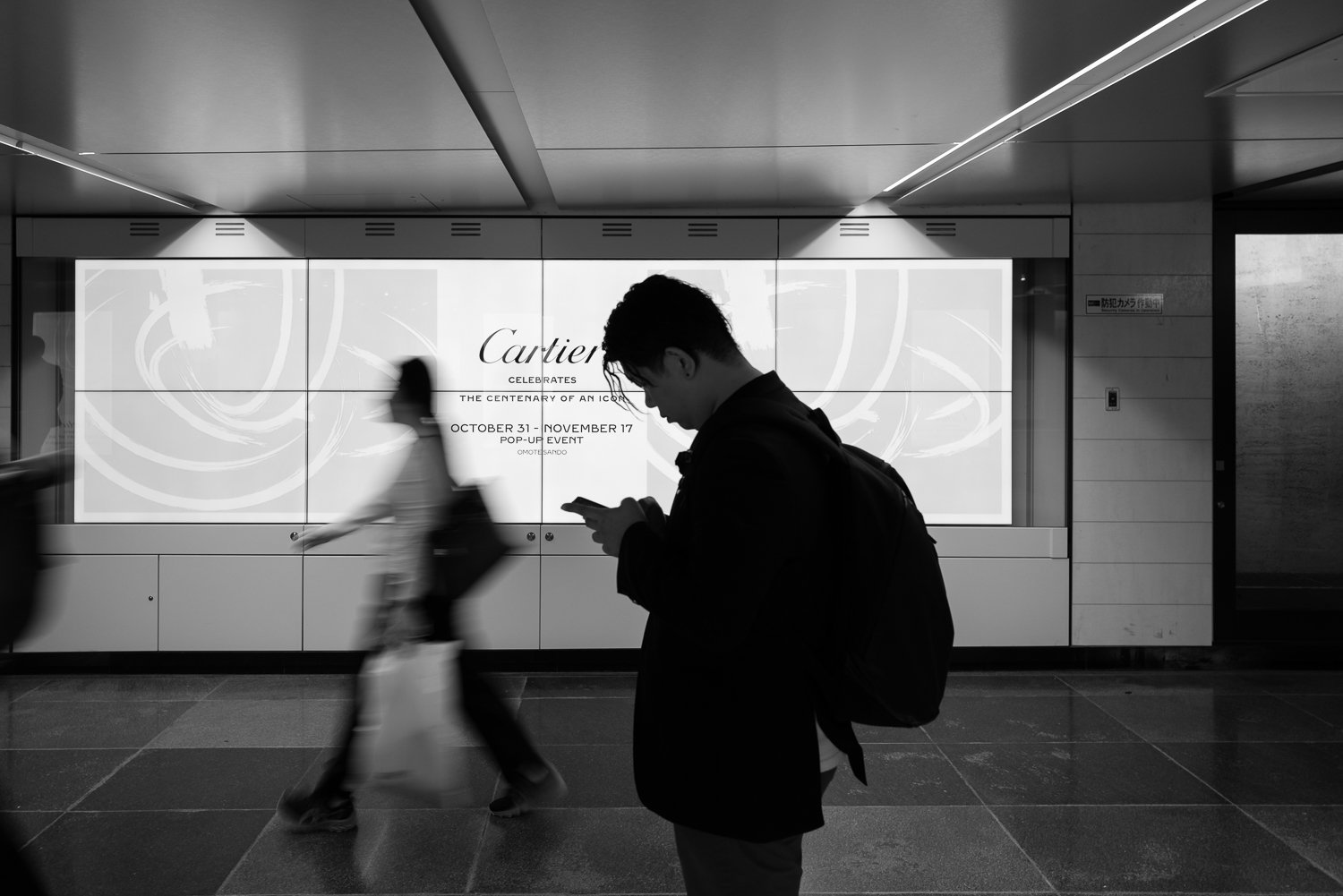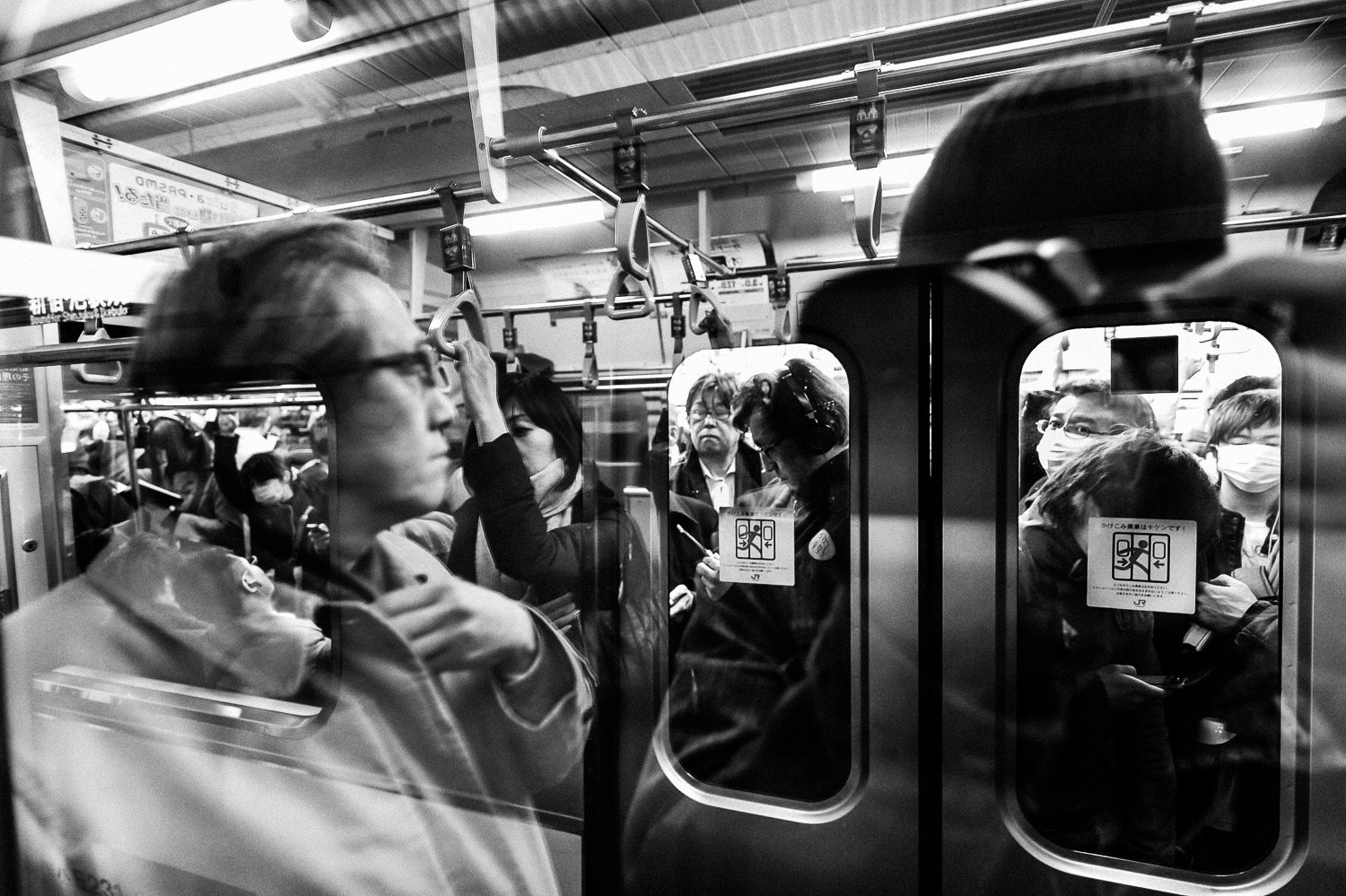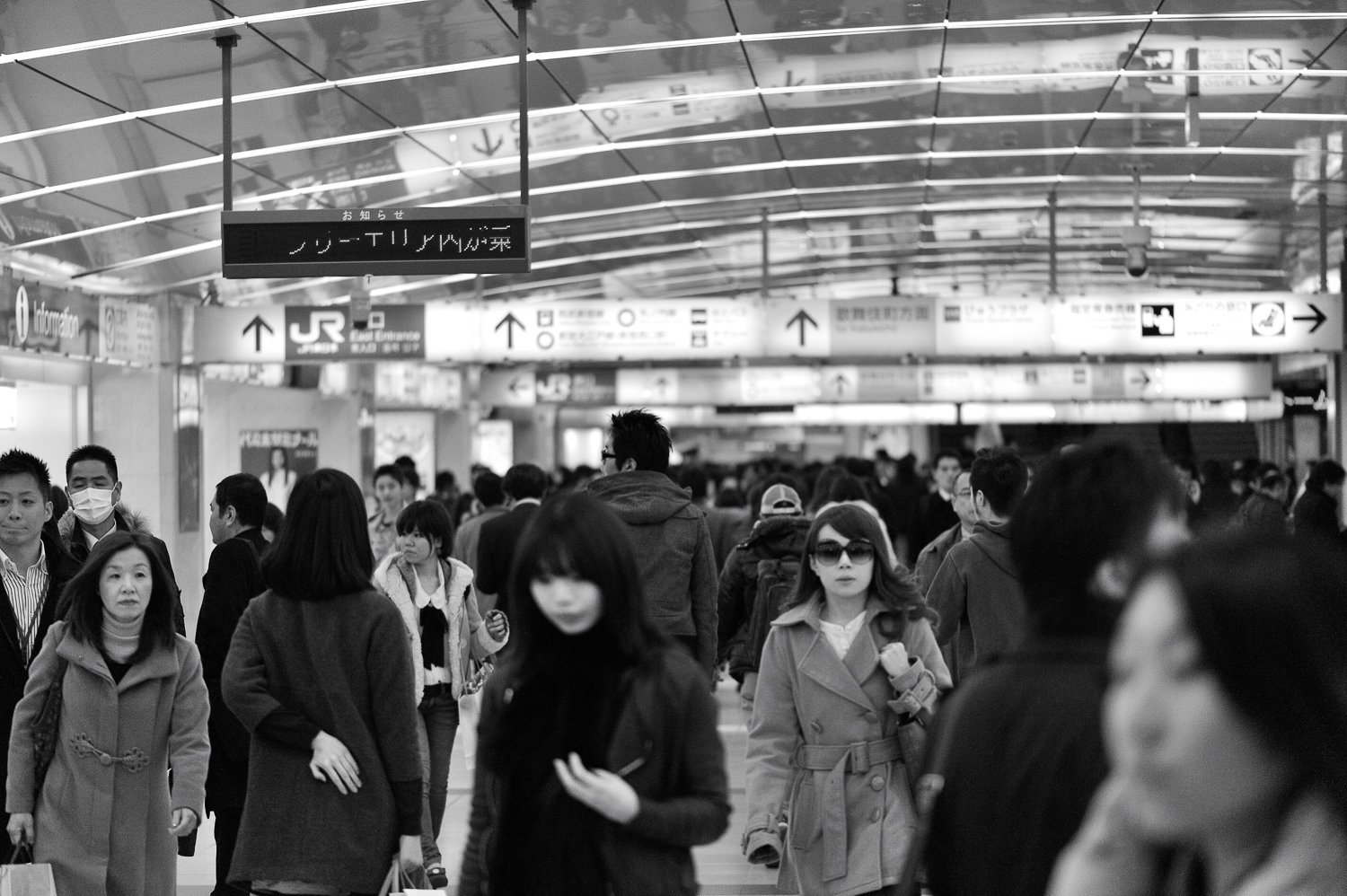Commuter Ghost: Exploring the Tokyo Commute
The concept of the half-self, the half-present self, is explored in the context of the Tokyo commute. Are we ever wholly present, or are we merely in transit?
A ghost traverses most of its waking hours, appearing fractured and transparent until it safely reaches its dwelling, a sanctuary where it can momentarily piece itself together. It exists in a liminal space, one foot in the ethereal and the other in the tangible world, constantly oscillating between visibility and obscurity.
Meanwhile, individuals navigate through the sprawling metropolis's infrastructure of concrete, glass, and steel, weaving through the urban landscape with an ease that mirrors the seamless flow of Wi-Fi signals that permeate the air around them. This urban dance is choreographed by a rhythm of modern life, yet every individual operates on a frequency of their own, one that is not entirely synchronized with those around them.
Out of phase while in motion, they carry with them the weight of their thoughts and unspoken feelings, a collective dissonance that resembles a catatonic seizure of sadness. This shared yet unacknowledged sorrow remains palpable, accessible to all who do not observe it closely, a haunting echo rippling just beneath the surface of their daily routines.
In the shadows of skyscrapers and the flickering glow of streetlights, the intertwining lives create a tapestry of experiences: some joyful, some sorrowful, but all uniquely their own. Each ghostly presence persists, weaving in and out of the bustling flow of humanity, reminding us that beneath the façade of connectivity lies an undercurrent of isolation that runs deeper than the rivers that cut through the urban sprawl. The city thrives, yet within its heart, a ghostly melancholy lingers, whispering stories of those who wander, both seen and unseen.





